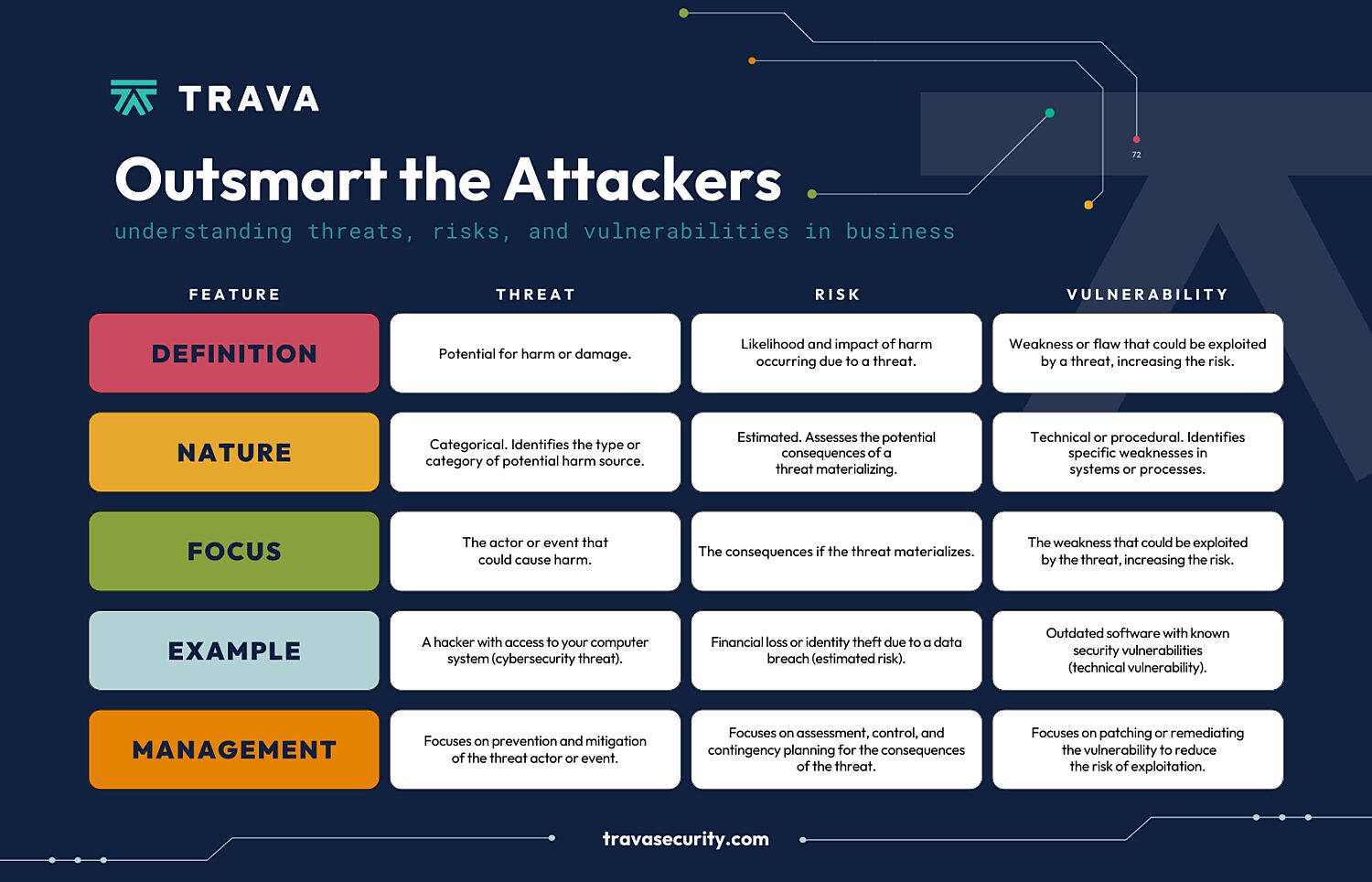This post was updated March 22, 2023.
Cyberattacks are growing rampantly in complexity and number, and criminals are now more cunning and daring than ever. In a nutshell:
- The average cost of data breaches is increasing every year. In 2022, businesses lost $4.35 million, $0.11 million more than in 2021, and 12.7% higher than in 2020.
- Data breaches are at a historic high, with approximately 15 million records exposed during 2022's third quarter.
- Companies lost over $3 billion in 2021 to decentralized finance (DeFi) thefts.
- The DDoS Intelligence system by Kaspersky noted a whopping 57,116 DDoS attacks during 2022's third quarter.
Such alarming trends have forced companies across the globe to reevaluate their cybersecurity postures and implement decisive approaches. But while strategies vary, enhancing network security begins with understanding safety and security terminologies.
Words Matter, Particularly in Cybersecurity
Cybersecurity, like any other sector, has its unique lingo. What sets security jargon apart is how precise experts use niche terminologies and phrases within their language. But these terms may seem interchangeable to novices or lay people, who often blend them.
And since cybersecurity comprises multiple moving parts, anyone inexperienced with vulnerability management can easily get them mixed up.
Arguably, "threat," "vulnerability," and "risk" are among the most commonly confused terminologies. But unfortunately, twisting these words limits your grasp of today's cybersecurity management technologies and tools. It can also hamper communication with other professionals on relevant topics.
Fortunately, the next section will guide you.
Risk Vs. Threat Vs. Vulnerability
So what do "threat," "vulnerability," and "risk" entail?
In essence, risk refers to the potential for destruction, damage, or loss of data or assets, resulting from a cyber-threat. On the other hand, a threat is what magnifies the chances of an adverse event, like a threat actor exploiting a vulnerability inside your system.
Finally, a vulnerability is simply a weakness in your applications, networks, or infrastructure that exposes your data and assets to threats.
Let's review each of these terms in detail.
What are threats?
If you're trying to protect an asset, then you'll be shielding it from a threat. The term refers to anything that can accidentally or intentionally exploit a vulnerability and damage, destroy, or obtain an asset.
Online, your company website and data are the assets. A hacker and their tools (like malicious code) would be a cyber threat. The criminal can install the code on your site, which can infiltrate your platform and shut it down or install viruses.
The main types of cyber threats are intentional, unintentional, or natural.
- Intentional threats: Things like malware, ransomware, phishing, malicious code, and wrongfully accessing user login credentials are all examples of intentional threats. They are activities or methods bad actors use to compromise a security or software system.
- Unintentional threats: Unintentional threats are often attributed to human error. For example, let’s say you forgot to lock the back door before leaving for work. While you’re at the office, a thief seizes the opportunity to sneak into your home and steal your valuables. Even though you didn’t mean to leave the door unlocked, the thief took advantage of your home’s vulnerability. In the cybersecurity industry, someone might leave the door to the IT servers unlocked or leave sensitive information unmonitored. An employee could forget to update their firewall or anti-virus software. Current and even former employees may also have unnecessary access to sensitive data, or simply be unaware of the threats. (Which is why employee training is so important.)
- Natural threats: While acts of nature (floods, hurricanes, tornadoes, earthquakes, etc.) aren’t typically associated with cybersecurity, they are unpredictable and have the potential to damage your assets.
HOW TO STAY AHEAD OF CYBERSECURITY THREATS
Awareness is the best way to prepare for threats. You must stay current on data breaches, cyberattacks, and the methods hackers use to accomplish them. The most common hazards include malware, MitM (man-in-the-middle), DDoS (distributed denial-of-service), SQL injection, and phishing.
To protect yourself from cyber threats, continuously monitor all data environments and use two-factor authentication. You should also teach your employees how to recognize phishing attempts and other tactics cyber criminals use to trick people into helping them gain access to sensitive data. For additional ways to protect you and your company’s data, check our ebook “10 Cyber Risk Management Issues Every Business Needs to Address ASAP.”

